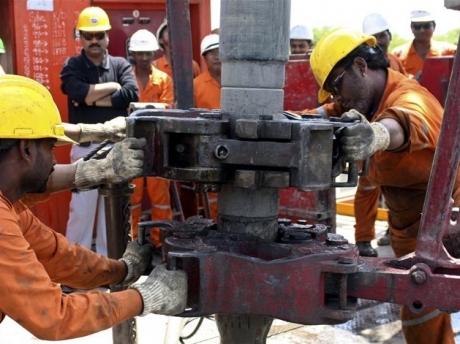
EXTREMELY IMPORTANT RELATIONSHIPS

With the US trying to disengage from intractable wars in the Middle East and Afghanistan, and the US economy rapidly reducing its dependence on Gulf oil, it was perhaps inevitable that Arab and Asian leaders would begin looking to each other for strategic and commercial support.
India and the Gulf states across the Arabian Sea have trade ties that go back centuries, but their mutual dependence has never been as strong as it is today.
The six-nation Gulf Co-operation Council is India's most important trading partner and provides half its oil, with the United Arab Emirates in the vanguard. Add in Iran and Iraq, and the Gulf region accounts for 80 per cent of India's oil needs, a figure expected to rise to 90 per cent in the next decade.
Yet the relationship is not as unbalanced as the oil trade or India's commercial record elsewhere might suggest. In the 2012-13 financial year, India exported $51bn to the GCC, mostly food, garments, jewellery and petrochemicals, making the Gulf a slightly more important market for India than the 28-nation EU.
The Gulf, furthermore, is home to 7m Indians, who send home $50bn a year in remittances and provide services ranging from taxi-driving and childcare to information technology and professional management. In some countries, they outnumber the locals, but have rarely been seen as a political threat.
"All told, this is an extremely important relationship. India is keen to ensure stability in the region," says Sanjaya Baru, director for geoeconomics and strategy at the International Institute of Strategic Studies. "The new dimension is a growing security relationship," he adds.
"Actually, for India this region is going to become even more important," he says, noting that the US, because of its newly discovered shale oil reserves, and China, because of imports of oil and gas from central Asia and Russia, have the chance to reduce their dependence on energy imports from the Gulf. India has fewer options.
Gulf leaders and entrepreneurs, meanwhile, are as eager to find new customers and investment opportunities in the east as Indians are to secure oil supplies and attract capital from the Middle East – which they call "West Asia".
Investors from Dubai and Bahrain, says Mr Baru, do not want to depend solely on Europe, the US and China and are looking forward to India's economic growth momentum returning under the new government of Narendra Modi. "They look at India as a country that will be part of their package of risk mitigation," he says.
Talmiz Ahmad, a former Indian diplomat who is regional president of IOT Infrastructure & Energy Services, a German-Indian joint venture making oil tanks and terminals, agrees that there are big opportunities for India and the Gulf states, as the US begins to lose interest in the region after three Gulf wars since 1980.
Long-established Indian-run enterprises in the Gulf in construction, retailing and other sectors have been joined by groups moving in from India such as Larsen & Toubro, the infrastructure group and metro system developer.
But Mr Ahmad cannot hide his disappointment at India's failure so far to attract from the sovereign wealth funds and other vast cash reserves of the Gulf states more than a tiny proportion of the $1tn it needs over five years to develop its infrastructure.
"This is a region with a considerable investable surplus," he says from his office in Dubai, overlooking a road junction with 25 parallel lanes of traffic that would be the envy of any Indian transport planner. For all the growth in two-way trade, "the problem still remains: we are not able to attract Gulf investment into India".
In the past 13 years, according to statistics compiled by the Confederation of Indian Industry, the UAE placed just $2.4bn in foreign direct investment in Indian projects, Oman $352m, Saudi Arabia $41m and the others negligible amounts.
"GCC accounts for 15 per cent of India's exports, 21 per cent of India's imports, but only 1.5 per cent of total FDI inflows," the CII said in a recent report.
Gulf investors, it seems, were no different from those of the west in their aversion tor the bureaucracy, corruption and difficulty of managing their own big investments in India. Organisations such as the Abu Dhabi Investment Authority preferred to invest indirectly through the stock market, reaping good returns on shares.
Like almost every other investor, Indian and foreign, they are waiting to see if Mr Modi, the Indian prime minister, can fulfil his campaign promises to boost investment and growth and build a reputation for India as an international power.
ft.com





